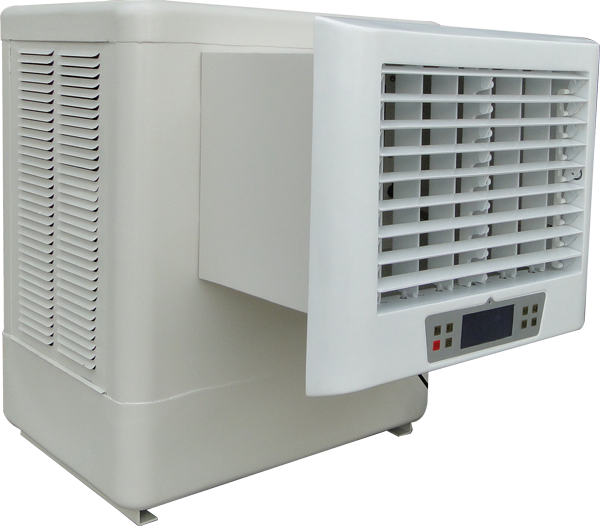Swamp cooler lower the temperature of air using the principle of evaporative
cooling, unlike typical air conditioning systems which use vapor-compression
refrigeration or absorption refrigerator.
Evaporative
cooling is the addition of water vapor into air, which causes a lowering of the
temperature of the air. The energy needed to evaporate the water is taken from
the air in the form of sensible heat, which affects the temperature of the air,
and converted into latent heat, the energy present in the water vapor component
of the air, whilst the air remains at a constant enthalpy value. This
conversion of sensible heat to latent heat is known as an adiabatic process
because it occurs at a constant enthalpy value.
Evaporative
cooling therefore causes a drop in the temperature of air proportional to the
sensible heat drop and an increase in humidity proportional to the latent heat
gain. Evaporative cooling can be visualized using a psychrometric chart by
finding the initial air condition and moving along a line of constant enthalpy
toward a state of higher humidity.
 |
| Explain working of swamp cooler |
A
simple example of natural evaporative cooling is perspiration, or sweat,
secreted by the body, evaporation of which cools the body. The amount of heat
transfer depends on the evaporation rate, however for each kilogram of water
vaporized 2,257 kJ of energy (about 890 BTU per pound of pure water, at 95°F) are transferred. The evaporation rate
depends on the temperature and humidity of the air, which is why sweat
accumulates more on hot, humid days, as it does not evaporate fast enough.
Vapor-compression
refrigeration uses evaporative cooling, but the evaporated vapor is within a
sealed system, and is then compressed ready to evaporate again, using energy to
do so. A simple evaporative cooler's water is evaporated into the environment,
and not recovered. In an interior space cooling unit, the evaporated water is
introduced into the space along with the now-cooled air; in an evaporative
tower the evaporated water is carried off in the airflow exhaust.




